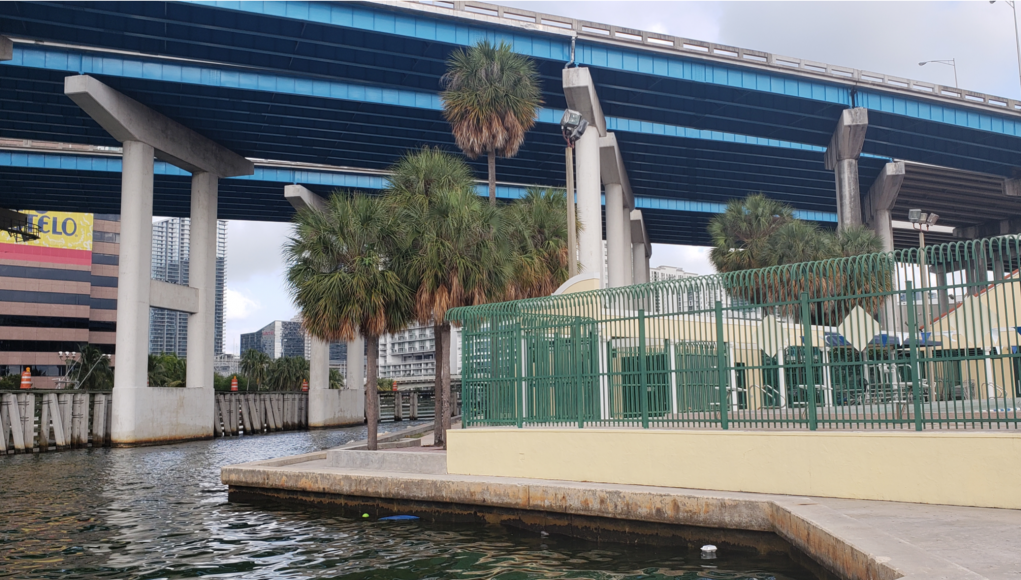The Van Alen Institute is working with the City of Miami on a project called Keeping Current to prevent sea level rising and flooding at José Martí Park.
Sea-level rise is a continuous problem in Miami. Hurricane Irma in 2017 showed some of the faults in the city’s drainage systems.
Located alongside the Miami River, José Martí Park in East Little Havana has had an ongoing flooding problem for several years.
A New York based non-profit organization, the Van Alen Institute has had similar projects underway in areas such as Brickell, which had serious flooding following Hurricane Irma. The organization is holding a contest for which design will be used for its José Martí project, with several engineers involved to pitch their ideas.
The Van Alen Institute has been using competitions among community members to find solutions for their area’s environmental problems for the last 125 years. Past projects have been in New York City as well as in California to stop the wildfire crisis.
Teams of engineers, architects and city designers are taking part in the proposals. If approved, the project would be funded by the Van Alen Institute.
The José Martí Park’s request for quotations is part of a larger project called Keeping Current: A Sea Level Rise Challenge for Greater Miami, to which the organization has donated $850,000.
The winning design for the contest was set to be announced by March 14 but, according to the Van Alen Institute, the city hasn’t decided on a winner.
Sarah Haun, the Director of Communications for the Van Alen Institute, says the City of Miami prevents it from discussing any competitive selection processes.
“The cone of silence has not yet been lifted,” said Haun, who originally believed it would be lifted by the set date of March 14. “That will happen when the City of Miami selects a winning team and, unfortunately, we don’t know when exactly that will be.”
José Martí Park is home to many activities in the Little Havana community, and many park-goers believe this is a long-overdue improvement.
In 2017, protestors marched from José Martí Park, arguing the dangers of sea level rise in Miami, and what they said was the city’s lack of action on the matter.
David Jerezano, 40, currently resides in New York City but grew up in the Little Havana area of Miami, and is pleased to see the project underway.
Jerezano, who frequented the park’s pool with his family in his youth, believes politics played a role in how long it took for a project like this to be in the works.
“This could have been done ages ago,” said Jerezano. “But since Miami has had a staunch Republican city management, climate change was not something to be taken seriously.”
Matthew Galego, 16, whose older brother played basketball at José Martí Park, says he began to notice the flooding after many visits to the park.
“I remember seeing flooding, especially on the sidewalks,” said Galego. “The basketball courts are far from the river, so I don’t think anyone else really noticed it.”
Jane Gilbert, the City of Miami’s chief resiliance officer, says the flooding at José Martí Park is an issue brought to the city’s attention in the last few years.
“The first time we saw flooding was a couple of years ago,” said Gilbert. “It’s not like this is something that has been happening for decades.”
Gilbert says the timing and scope of the project will not be determined until after the current design and planning phase, but there are no plans to involve any of the buildings in which activities in the park are held.
“It will not impede on any after school or daytime career programming,” said Gilbert. “I don’t see any of the planned activities really being disrupted.”
Gilbert says the hope is that the new project will not only stop tidal and storm surge flooding at the park’s riverfront, but can potentially serve as a drainage system for surrounding communities.
There has also been concern over the money being put into the project and whether it’s needed, given the improvement of the King Tide’s measurement in José Martí Park last year. In an article for the Miami Herald, city officials said the water barely reached the park’s sea wall at high side, where as it had reached the sidewalk the year before.
Improvements in plumbing may have played a part in improving this, and the usual dams and sandbags weren’t needed.
Both the City of Miami and The Van Alen Institute hope the winning design used for the park will serve as a blueprint for projects in other areas of Miami affected by flooding and sea level rise.































